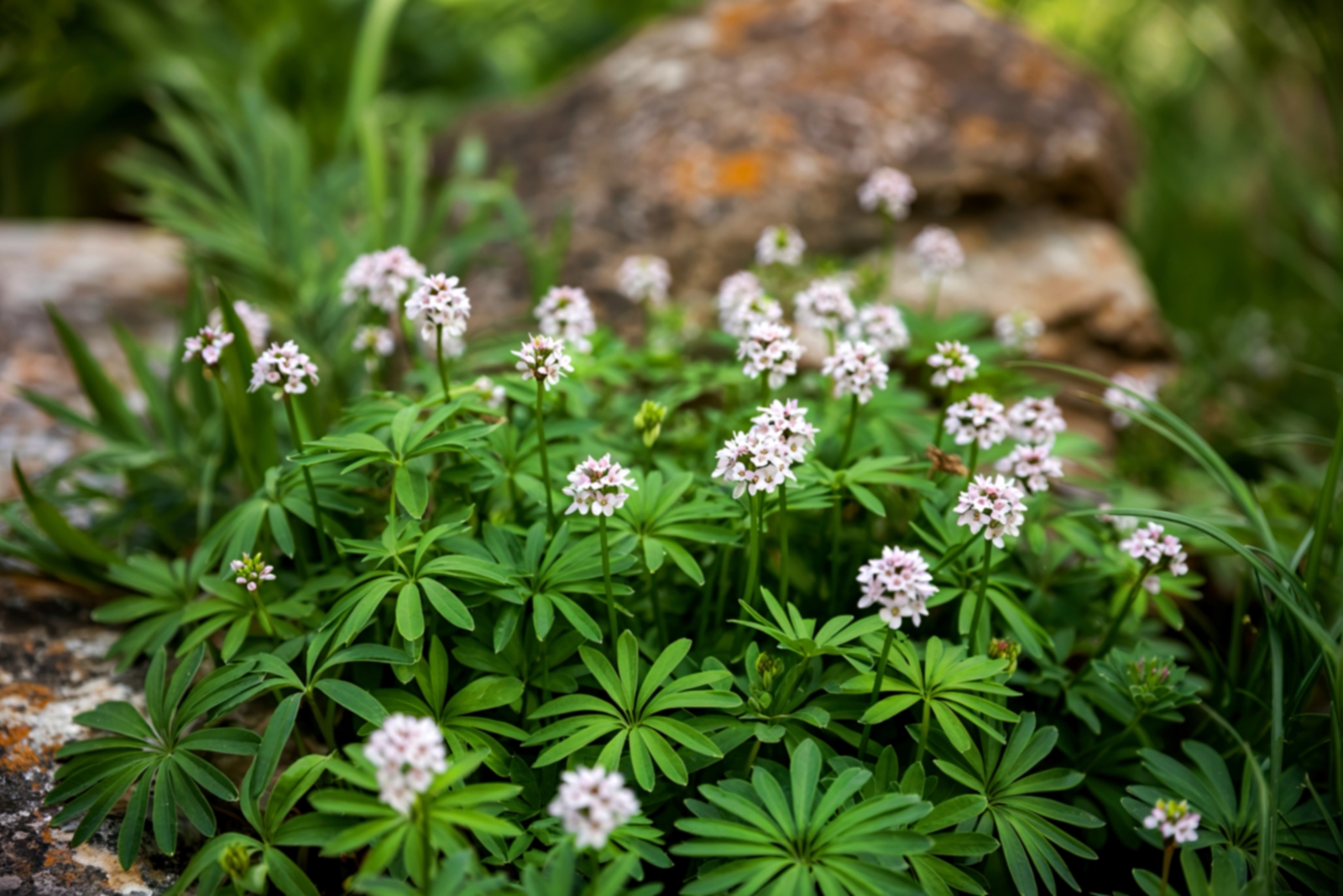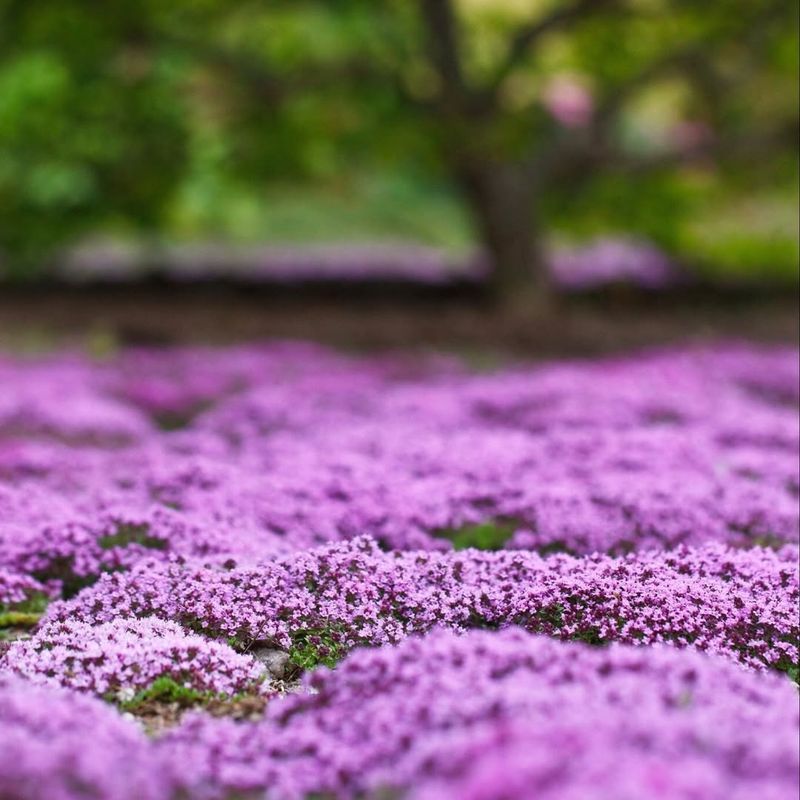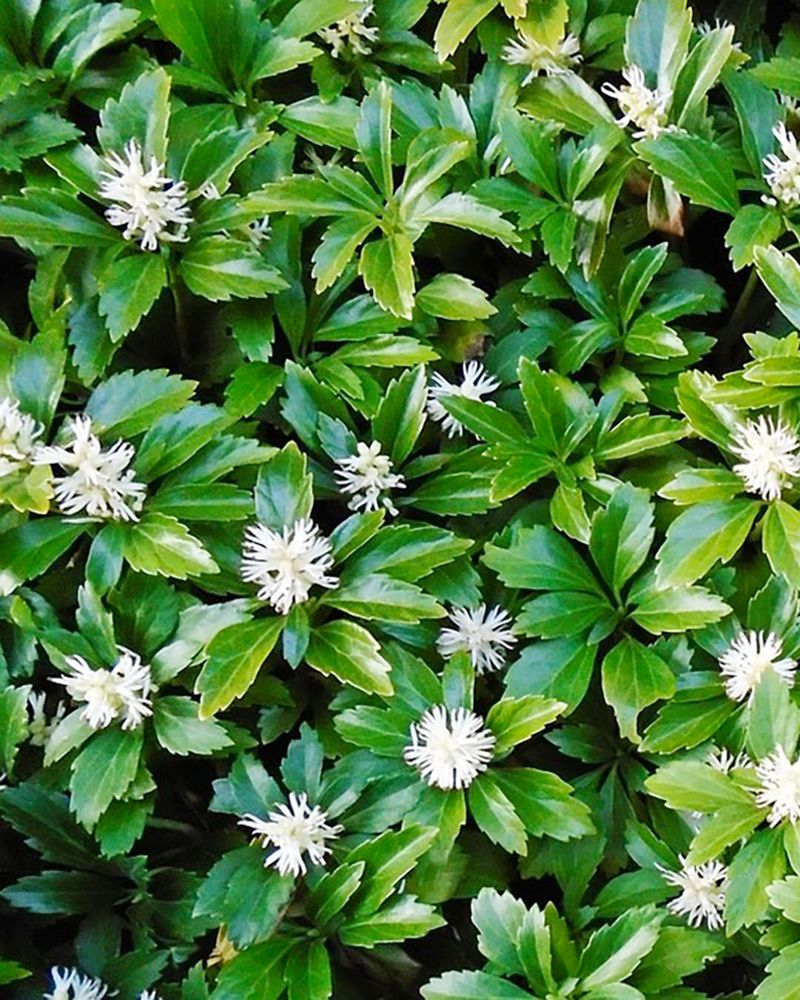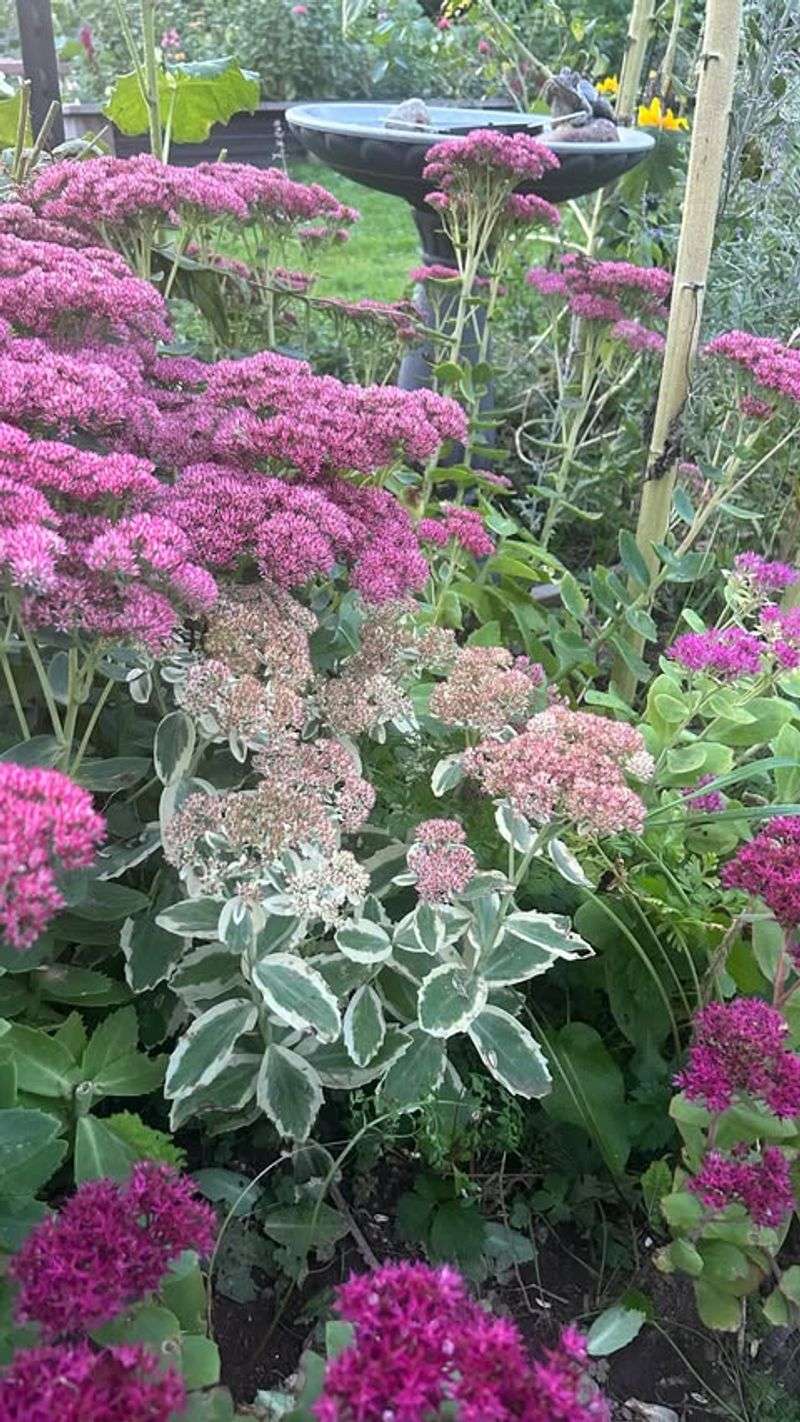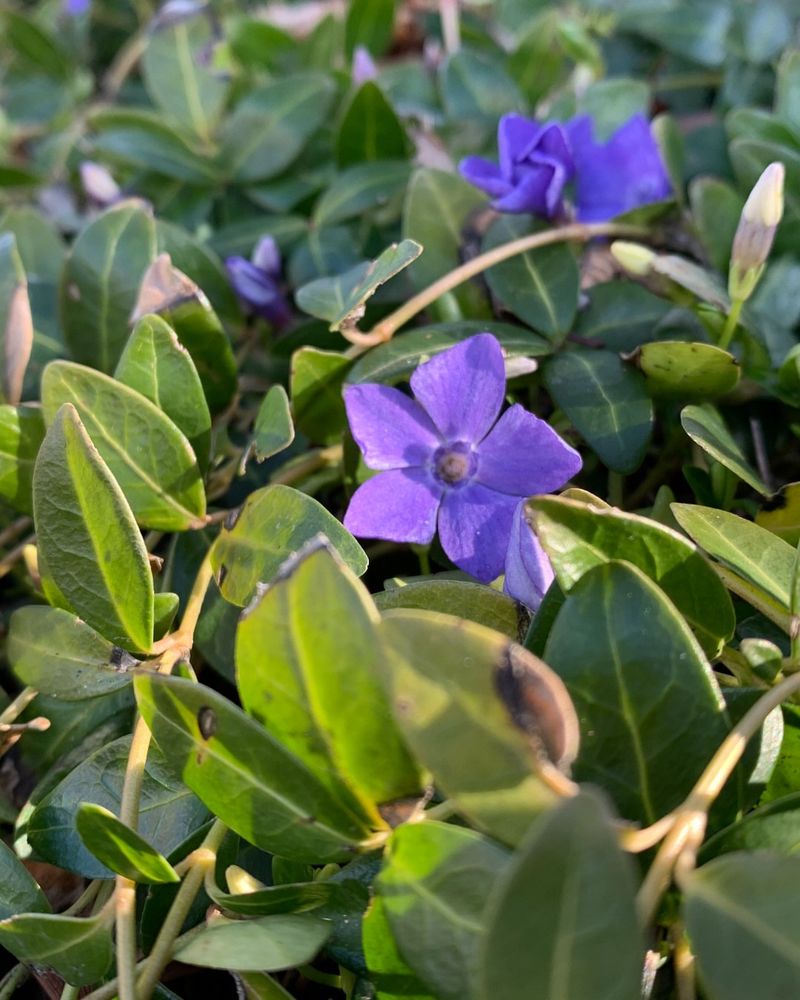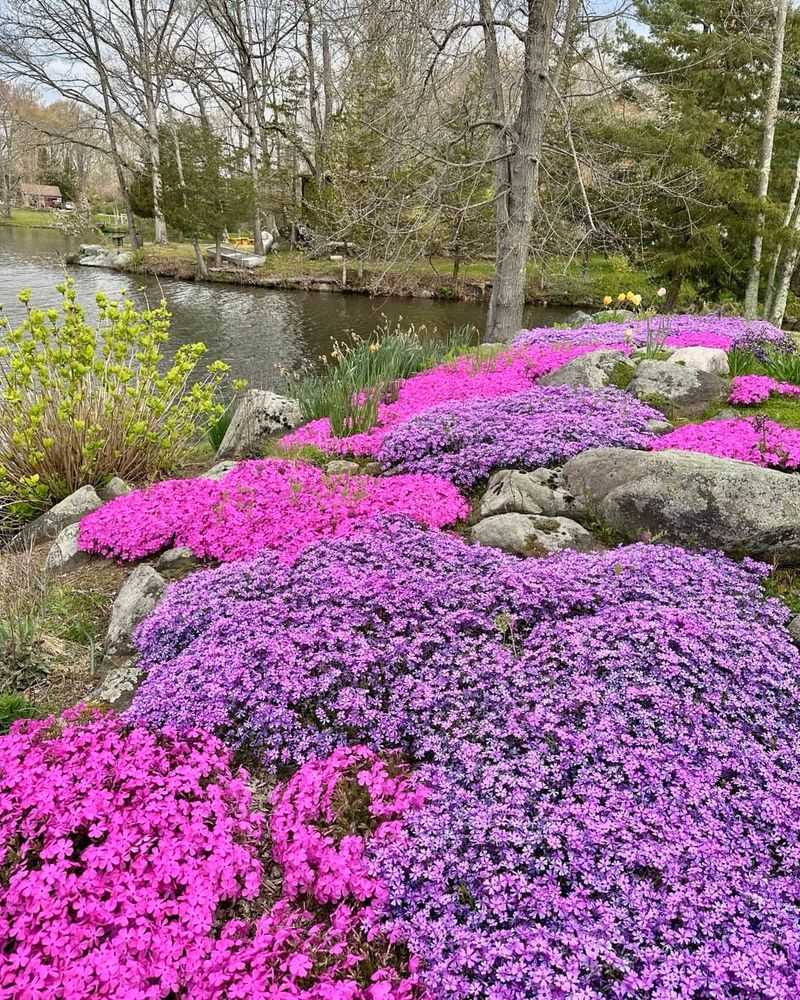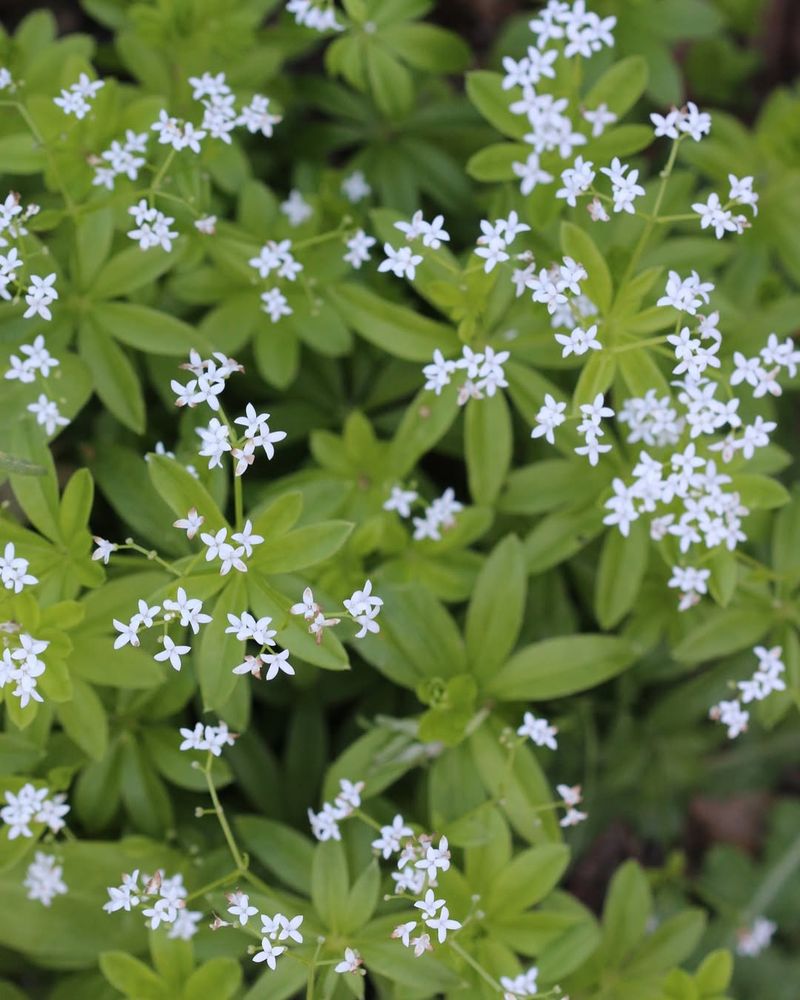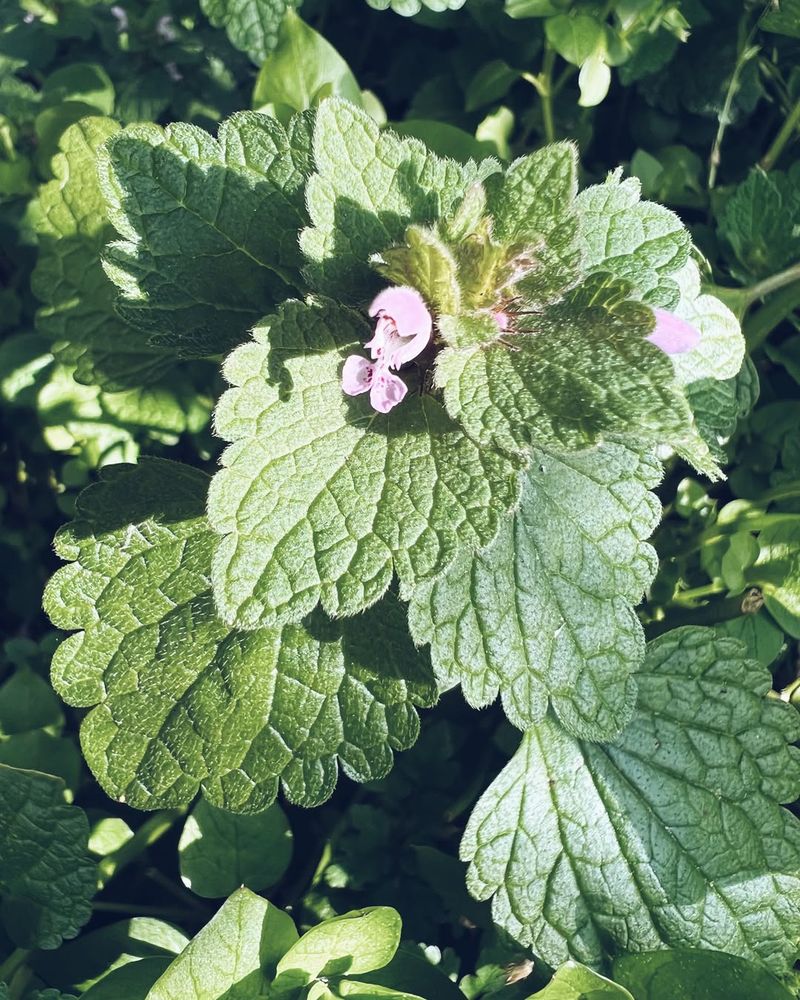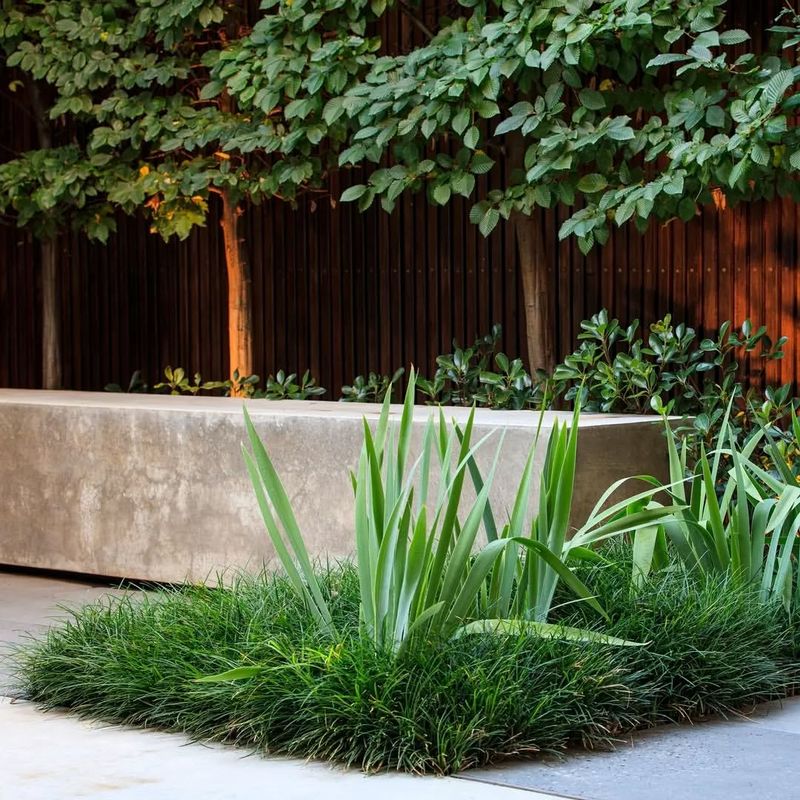Bare patches can make New Jersey lawns and gardens look tired, but the right ground covers quickly turn them around.
These low-growing plants stop erosion, crowd out weeds, and add color where grass struggles to grow. A smart mix of tough, spreading varieties restores life to empty spaces fast.
1. Creeping Thyme
Walking across this fragrant plant releases a delightful herbal scent that fills the air around you. Creeping thyme forms a dense mat of tiny leaves topped with pink, purple, or white flowers in early summer.
It tolerates foot traffic well, making it ideal for pathways between stepping stones. Drought-resistant once established, it thrives in full sun and well-drained soil, requiring minimal maintenance throughout the growing season in New Jersey.
2. Pachysandra
Shady spots under trees become vibrant carpets of glossy green foliage with this evergreen favorite. Its ability to thrive where grass struggles makes it a go-to solution for difficult areas.
Pachysandra spreads steadily through underground stems, filling bare ground without becoming invasive. Small white flowers appear in spring, adding subtle interest. Once established, it needs little water and stays green year-round, even during harsh New Jersey winters.
3. Sedum
Succulent leaves store water like tiny reservoirs, allowing sedum to survive in dry, rocky areas where other plants fail. Varieties range from low-growing types to taller species, all producing colorful blooms.
Butterflies and bees flock to the star-shaped flowers that appear from summer into fall. Perfect for New Jersey slopes and rock gardens, sedum requires almost no care once planted. Its fleshy foliage adds interesting texture and often changes color with the seasons.
4. Periwinkle (Vinca Minor)
Charming blue-purple flowers peek out from glossy evergreen leaves each spring, creating a cheerful display. Periwinkle adapts to both sun and shade, though it performs best with some protection from intense afternoon heat.
Its trailing stems root as they spread, quickly covering large areas. Deer tend to leave it alone, which is a bonus in many New Jersey neighborhoods. The plant stays attractive through winter, providing year-round interest in your landscape.
5. Ajuga (Bugleweed)
Spikes of blue, purple, or pink flowers rise above colorful foliage in late spring, attracting hummingbirds to your New Jersey garden. Leaf colors range from deep burgundy to bronze and variegated patterns, offering visual interest beyond the blooming period.
Ajuga spreads quickly in moist, shady locations, making it excellent for erosion control on slopes. It tolerates moderate foot traffic and stays semi-evergreen in milder winters. Regular division keeps it from becoming too aggressive in smaller spaces.
6. Creeping Phlox
Imagine a carpet of vibrant pink, purple, white, or red flowers covering the ground in spring—that’s what creeping phlox delivers. The blooms are so abundant they nearly hide the needle-like evergreen foliage beneath.
New Jersey rock gardens and sunny slopes become stunning displays when this plant takes hold. It prefers well-drained soil and full sun, rewarding you with a spectacular show each year. After flowering, the foliage remains attractive, providing texture and color throughout the seasons.
7. Wild Ginger
Heart-shaped leaves create a lush, tropical-looking carpet in shady garden areas where few other plants prosper. Native to eastern forests, wild ginger feels right at home in New Jersey’s woodland settings.
Hidden beneath the foliage, unusual maroon flowers bloom close to the ground in spring. The leaves release a ginger-like scent when crushed, though the plant isn’t related to culinary ginger. It spreads slowly through rhizomes, forming dense colonies that suppress weeds naturally.
8. Sweet Woodruff
Delicate white flowers float above whorls of bright green leaves in late spring, creating an enchanting woodland scene in New Jersey. When dried, the foliage releases a sweet vanilla-like fragrance that was historically used to scent linens.
Sweet woodruff thrives in moist, shady locations, spreading to form dense mats that crowd out weeds. It goes dormant in winter but returns reliably each spring. The plant pairs beautifully with spring bulbs and hostas in shade gardens.
9. Lamium (Dead Nettle)
Silver-splashed leaves brighten dark corners where little else will grow, making lamium a valuable asset in challenging spaces. Pink, white, or purple hooded flowers appear from spring through summer, adding extra color.
Despite its common name, dead nettle doesn’t sting like true nettles. It spreads moderately in shade or partial sun, tolerating dry conditions once established. The variegated foliage provides interest even when flowers aren’t present, lighting up gloomy areas throughout the growing season.
10. Creeping Jenny (Lysimachia)
Bright chartreuse or golden foliage cascades over walls and fills in gaps with cheerful color that catches the eye. Small yellow flowers dot the trailing stems in summer, though the vibrant leaves steal the show.
Creeping Jenny loves moist soil and can even grow in shallow water, making it perfect for New Jersey pond edges or rain gardens. It spreads enthusiastically, so give it space or be prepared to trim it back. The golden variety adds a sunny glow to shady spots.
11. Mondo Grass
Narrow, grass-like leaves form neat clumps that create a formal, manicured appearance without the mowing. Though it resembles grass, mondo grass is actually related to lilies and stays evergreen in mild winters.
Small purple flowers appear in summer, followed by blue berries that add seasonal interest. It grows slowly but steadily in shade or partial sun, eventually forming a dense ground cover. Mondo grass works well along pathways, under trees, or as a lawn alternative in low-traffic areas.

